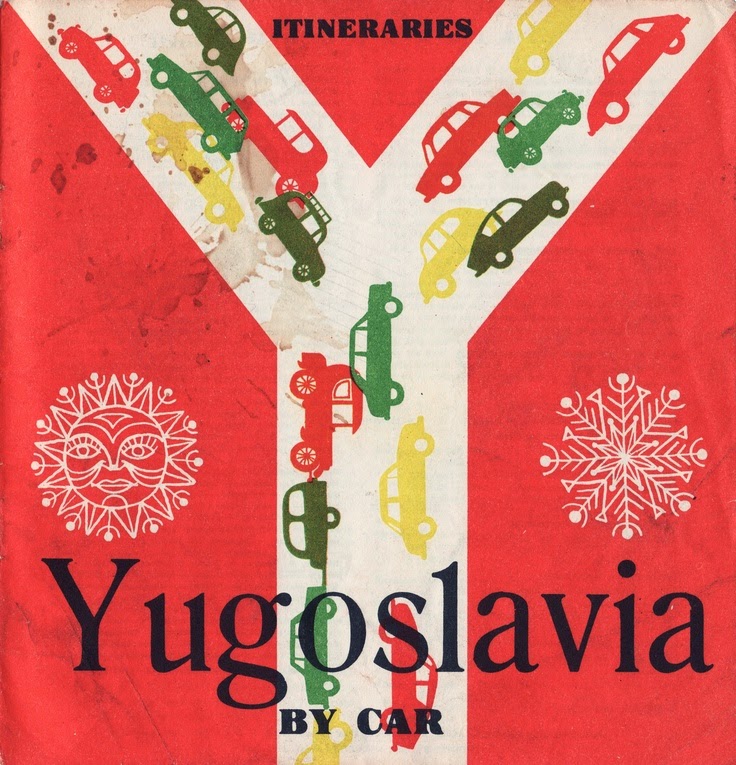 This lime- stone funda- ment is reminiscent of County Connemara in Ireland, whose sweeping plains are rivulets of the jagged rock face—with little top-soil but still managing to hold fast an ecosystem that supports everything from mosses up to cows—and people, rising also to form pseudo-fjords in parts.
This lime- stone funda- ment is reminiscent of County Connemara in Ireland, whose sweeping plains are rivulets of the jagged rock face—with little top-soil but still managing to hold fast an ecosystem that supports everything from mosses up to cows—and people, rising also to form pseudo-fjords in parts. The pools and lakes here and waterfalls are created by sediment that transforms into basically a chalky, soft substance that is much less permanent than what lies beneath and has given rise to wonderland, which was already duly recognised as one of the world's treasures by UNESCO in 1979 as one of the first natural places on the register.
The pools and lakes here and waterfalls are created by sediment that transforms into basically a chalky, soft substance that is much less permanent than what lies beneath and has given rise to wonderland, which was already duly recognised as one of the world's treasures by UNESCO in 1979 as one of the first natural places on the register. Tourists can visit the park by sticking to these wooden gangways that look like the walkways from the Ewok village on the Moon of Endor. The wildlife here includes wolves, bears, otters, owls, vultures and lynxes but most shy away from the visiting crowds and the trails close promptly at sundown. A bit further south, past the Velebit mountain range, was the nature reserve of Paklenica canyon, and we hiked the trails there as well. It was easy to conjure up any number of adventures transpiring here.
Tourists can visit the park by sticking to these wooden gangways that look like the walkways from the Ewok village on the Moon of Endor. The wildlife here includes wolves, bears, otters, owls, vultures and lynxes but most shy away from the visiting crowds and the trails close promptly at sundown. A bit further south, past the Velebit mountain range, was the nature reserve of Paklenica canyon, and we hiked the trails there as well. It was easy to conjure up any number of adventures transpiring here. Not too far away are much more arid climes, baked by the Adriatic sun and unrelenting Bora winds (a gust characteristic of the area that barrels downhill and snowballs once it reaches the lowlands), like these desert hills of the Isle of Pag—whose moonscape made me think of Tatooine. They were filming something there, but we suspect it was a car commercial, to appeal to customers' off-road fantasies even though it's doubtful they'll ever be realised.
Not too far away are much more arid climes, baked by the Adriatic sun and unrelenting Bora winds (a gust characteristic of the area that barrels downhill and snowballs once it reaches the lowlands), like these desert hills of the Isle of Pag—whose moonscape made me think of Tatooine. They were filming something there, but we suspect it was a car commercial, to appeal to customers' off-road fantasies even though it's doubtful they'll ever be realised.It turns out that these natural backdrops were indeed made famous on celluloid in the late 1950s and early 1960s in the cinematic adaptations of German adventure-writer Karl May's novels of the Wild West, whose success spurred on other franchises like the Lone Ranger and Zorro.
 May came to claim his cowboy-and-Indian stories with such iconic characters as the wise Winnetou, chief of the Apaches, and Old Shatterhand, his white blood-brother and the author's vicarious alter-ego, but May never saw these exotic places for himself—though compensating well with his imagination. It seems appropriate that the wilds of Yugoslavia (at the time) could be a fitting understudy and perhaps more authentic and awe-inspiring than those locations never visited.
May came to claim his cowboy-and-Indian stories with such iconic characters as the wise Winnetou, chief of the Apaches, and Old Shatterhand, his white blood-brother and the author's vicarious alter-ego, but May never saw these exotic places for himself—though compensating well with his imagination. It seems appropriate that the wilds of Yugoslavia (at the time) could be a fitting understudy and perhaps more authentic and awe-inspiring than those locations never visited.






















